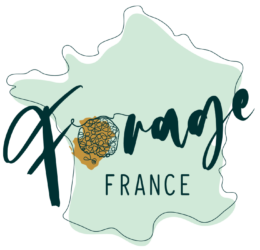So, we are all stuck indoors and only allowed out for our one form of exercise a day.
Today, for my one form of exercise, I thought I would take you on a short 15 minute journey through a small wooded area that is local to me. Warren Farm, which although separate, is part of Nonsuch park in Cheam.
So this is for you, the person who can’t go out on their usual walk in the park or woods, or would like to know more about what our local parks have to offer.
It’s important that we observe the rules of lockdown so I have filmed this as one continuous shot only pausing to look at the plants and trees we come across during our journey.
Below is the information for the photos that I have added to the end of the video.
Enjoy, and best wishes,
Tom
Link to post on nettles – Nettles, misunderstood.
Link to post on ancient trees – Six ancient trees of Britain
Peacock butterfly – I mention this when we look at nettles Click the link for a look at my video and post of a peacock butterfly.
Silver washed fritillary – Unusually for a butterfly, the female does not lay her eggs on the leaves or stem of the caterpillar’s food source (in this case violets), but instead one or two meters above the woodland floor in the crevices of tree bark close to clumps of violets. When the egg hatches in August, the caterpillar immediately goes into hibernation until spring. Upon awakening, it will drop to the ground, and feed on violets close to the base of the tree. The caterpillar usually feeds at night, and usually conceals itself during the day away from its food source, but during cool weather will bask in the sunny spots on the forest floor on dry, dead leaves.*
Orange tip butterfly – The first butterflies to be seen each year are ones that survive the winter by hibernating in adult form, such species as the brimstone and peacock can even be seen on mild winter days. Not many butterflies are born from pupae as early as April but the orange-tip usually manages this feat.*
Small blue butterfly – Britain’s smallest butterfly is easily overlooked. Its sole food source is the plant kidney vetch. Males perch on tall grass or scrub. From late afternoon onwards they can be found in communal roosts, facing head down in long grass. The butterflies live in small colonies which are declining in most areas. Found throughout Britain and Ireland but rare and localised.
Common blue butterfly – Measuring 35mm it is one of the most widespread butterflies in the UK. The common blue caterpillars like to feed on birds-foot trefoil.
Cinnabar moth – Day and night flying moth with a black body and red hindwings, it is commonly found on ragwort where it feeds and pupates.
Ferns and the Fibonacci sequence – Ferns are a good example of how the Fibonacci sequence is found within nature. Plant growth is governed by this sequence and is known as the ‘law of acclimation’ the sequence is created by adding the last two numbers in a sequence to find the subsequent
number. 0-1-1-2-3-5-8-13-21-34-55-89… 89 would be added to 55
to get the next number = 144 and so on. This sequence describes
how things grow, how trees branch out, how flowers form and how
ferns, like bracken, unfurl.
Mossy rose gall – Diplolepis rosae is a gall wasp which causes a gall (that mossy growth) known as Robin’s pincushion, or moss gall. The gall develops as a chemically induced distortion of an unopened leaf or bud, mostly on field rose or dog rose. Up to 60 eggs are laid within each leaf bud. The grubs develop within the gall, and the wasps emerge in spring 99% of which are female.
Lichen – 1800 varieties in the uk and 17000 globally. Lichens cover approximately 6% of the earth’s surface. Lichens are a symbiotic relationship between and algae and a fungus. Simply these fantastic lichens can be split into three broad categories;
- Crustose – firmly attached to surface and cannot be easily
detached with a fingernail - Foliose – leafy lichens and can be easily lifted away with a
fingernail. They may also appear to have fine roots. - Fruticose – Bushy lichens attached at one point and look more
like plants.
Six spotted burnet moth – A daytime moth that has 6 distinctive red (occasionally yellow) spots set against a black body on each wing. Commonly found on grassland and meadows feeding on thistles, and scabious.
Speckled wood butterfly – Prefers the dappled light of woodland and likes to feed on honeydew which is produced by aphids when they feed on the sap.

Silver washed & Orange tip – credit*














